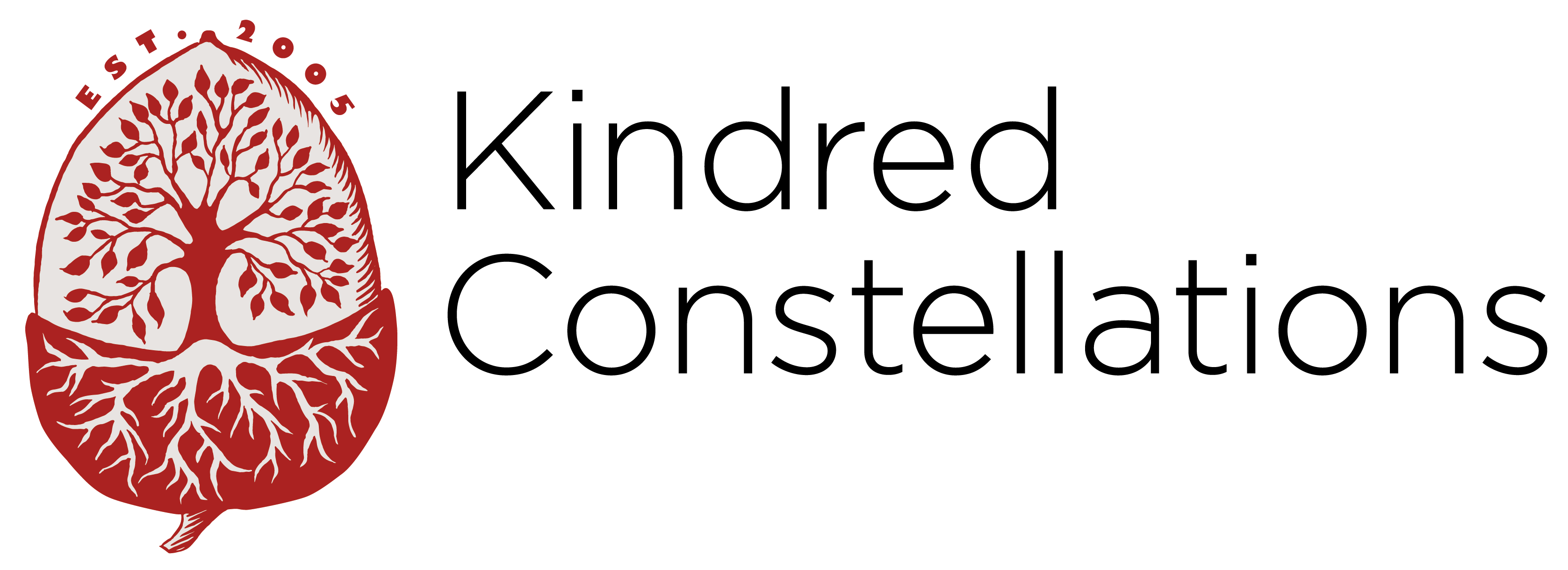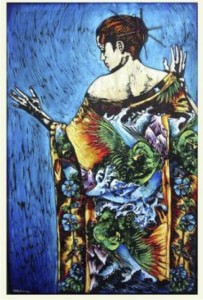Here is an interesting article written by Molly S. Castelloe in May 2012
Holding the Secret History of our Ancestors
What is overwhelming and un-namable is passed on to those we are closest to. Our loved ones carry what we cannot. And we do the same.
This is the subject of Lost in Transmission: Studies of Trauma Across Generations, edited by M. Gerard Fromm (2012). This collection of essays on traumatic transmission builds on the idea that “what human beings cannot contain of their experience—what has been traumatically overwhelming, unbearable, unthinkable—falls out of social discourse, but very often on to and into the next generation as an affective sensitivity or a chaotic urgency.”
The transmission of trauma may be particular to a given family suffering a loss, such as the death of an infant, or it can be a shared response to societal trauma.
Maurice De Witt, a sidewalk Santa on Fifth Avenue noticed a marked change in behavior the holiday season following 9/11 when parents would not “let the hands of their children go. The kids sense that. It’s like water seeping down, and the kids can feel it… There is an anxiety, but the kids can’t make the connections.”
“This astute man was noticing a powerful double message in the parent’s action,” Fromm says. “Consciously and verbally, the message was ‘Here’s Santa. Love him.’ Unconsciously and physically, it was ‘Here’s Santa. Fear him.’ The unnamed trauma of 9/11 was communicated to the next generation by the squeeze of a hand.”
Psychic legacies are often passed on through unconscious cues or affective messages that flow between child and adult. Sometimes anxiety falls from one generation to the next through stories told.
Psycho-historian Peter Loewenberg recalls the oral tradition of his parents who lived through the hunger years in Germany during the First World War when the physical health and stature of a generation was stunted due to prolonged malnutrition. According to their stories, a once-a-year indulgence was an orange segmented and apportioned among the entire family. Loewenberg further identifies a cause chain between physical privations of the German people during WWI, which culminated in the Great Depression (1929), and the Nazi appeal to children of Central Europe. To what extent did “the passive experiences of childhood starvation” lead to a reversal and fantasied “undoing” through the hunger regimen and cruelty of the concentration camps? (Lowenberg, 61)
He cites another example of group transmission and its reversal. “The greatest Chinese historical trauma was undoubtedly the humiliation of the Japanese Imperial land” (1937-1945). When Chairman Mao Zedong proclaimed the People’s Republic in 1949 and said “The Chinese People have stood up!” he was repairing historical shame and hurt.
Psycho-historian Howard Stein takes up the topic of collective trauma in America and imagines all the possible directions trauma can be transmitted in nations, ethnic groups, religions, and families. Trauma can be transferred in “vertical” direction, for example, in the brutal downsizing of a corporation. This is also the case in a leadership change at a local church after a pastor has been accused of sexual misconduct.=-
Stein articulates “horizontal” transmission as the circulation of injury among people in more equivalent powers relations. This is often the experience of health professionals working with victims of large scale disaster, such as the Oklahoma City bombing (1995), who suffer the empathy of witnessing second-hand. Vertical and lateral transmissions may happen concurrently, in relation to the same event.
Traumatic transmission ferries out unacknowledged grief along multiple vectors. Stein says mourning is “short-circuited,” groups become “stuck” in time, and collective solidarity is created in the process.
Transmission is the giving of a task. The next generation must grapple with the trauma, find ways of representing it and spare transmitting the experience of hell back to one’s parents. A main task of transmission is to resist disassociating from the family hertiage and “bring its full, tragic story into social discourse.” (Fromm, xxi)
Often one child within a family is nominated to both carry and communicate the grief of their predecessors. There was a man who entered a Holocaust Museum requesting that the institution keep the remains of the tattooed serial number taken from his arm. The chosen child is analogously charged with the mission of keeping the family heritage, being a “holding environment.”
How do we carry secret stories from before our lifetimes?
Trans-generational transmissions take on life in our in dreams, in acting out, in “life lessons” given in turns of phrase and taught us by our family. Discovering transmission means coming to know and tell a larger narrative, one from the preceding generation. It requires close listening to the stories of our parents and grandparents, with special attention to the social and historical milieu in which they lived — especially its military, economic and political turmoil.
The emotional ties between child and ancestors are essential to the development of our values. These bonds often determine the answers to myriad questions such as: “Who am I?” “Who am I to my family?” “Who can ‘we’ trust” and who are our enemies?” “What ties me to my family?” And, most importantly, “of these ties, which do I reject and which to I keep?” (Barri Belnap, 127)
How does one discharge this mission? It is a precarious terrain of finding one’s way through a web of familial loyalties to which one has been intensely faithful. The working through of transmission entails a painful, seemingly unbearable, process of separation. It can become an identity crisis, the breaking of an emotional chain. As Fromm puts it, “something life defining and deeply intimate is over.” The child speaks what their parent could not. He or she recognizes how their own experience has been authored, how one has been authorized, if unconsciously, to carry their parents’ injury into the future. In rising above the remnants of one’s ancestors’ trauma, one helps to heal future generations.
________________
http://www.twitter.com/mollycastelloe

